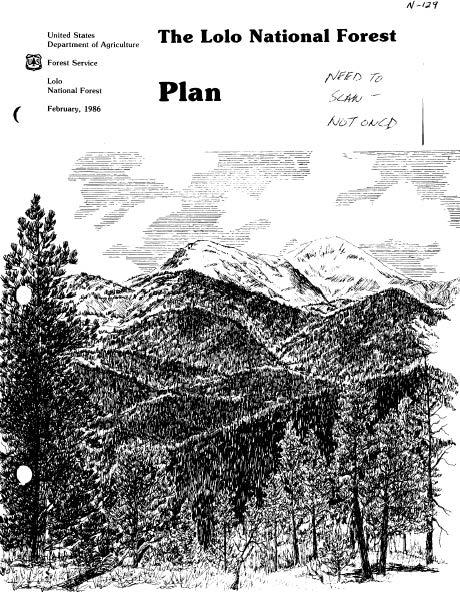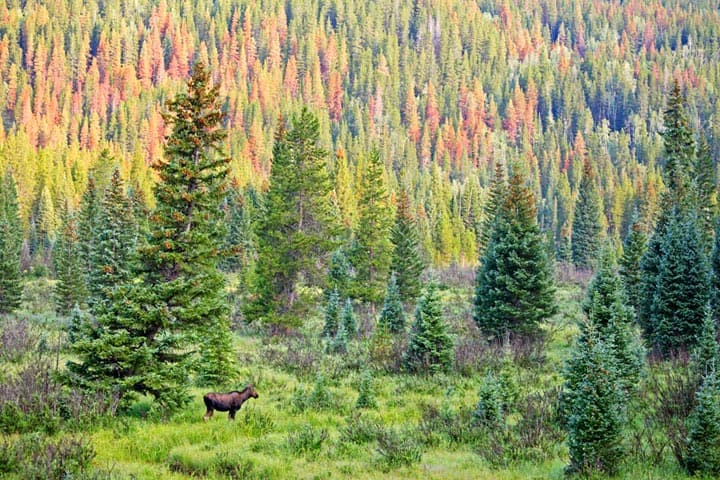The question of standards in forest planning has emerged as a central issue in the proposed NFMA regulations. It seems that a common narrative by the press in covering the story thus far is the amount of discretion afforded in the proposed rule versus its lack of “musts and shalls.”
Here is the definition of standards in the proposed regulations: “A standard is a mandatory constraint on project and activity decisionmaking, established to help achieve or maintain the desired condition or conditions, to avoid or mitigate undesirable effects, or to meet applicable legal requirements.” (76 Fed. Reg. 8517).
I have made my pro-standards case in various places, hitting on the usual theme of accountability, while others like Professor Mark Squillace have thoughtfully criticized their use at the forest plan level. I hear similar complaints about standards from others participating in the draft regulations as well.
This is an important debate. But my sense is that we might not all be that clear about the variety of ways in which standards are used in planning. Maybe we all have different conceptions based on our interactions with forest planning in various parts of the country. So before making an argument for standards, allow me to first explain what I mean by the term.
Types of Standards Used in Forest Planning
Different types of standards are used in forest planning. They can differ in scale, specificity, and complexity. Some administrative regions of the USFS, for example, use standards cutting across multiple National Forests (this being very relevant to Melissa’s point about standards and scale–many of us agreeing that some standards might best be applied at larger spatial scales).
National Forest plans have also used forest-wide standards that vary in detail and complexity. Take, for example, the forest-wide range standard in the 1986 Lolo National Forest Plan:
Conflicts between livestock and big game will be resolved so big game are allocated the forage required to meet their needs. Domestic livestock will be allowed to utilize any forage surplus not conflicting with the planned expansion of big-game populations. Reductions in livestock numbers will be avoided if possible, but will be acceptable to meet management goals. (II.9).
To me, this seems more like a nudge than a clear unequivocal standard, but it still provides some direction.
Forest-wide standards can also be more complicated, such as the Lolo’s forest-wide “snag standard.” This standard requires sufficient snags and dead material to be provided in order to maintain 80 percent of the population of snag-using species. More detailed prescriptions are provided in this forest-wide standard, such as specifying the number of big snags needed per acre on different forest types on the Lolo. (I get the sense that critics of standards are thinking about this sort of example).
Standards are also used for particular management areas or zones as identified in a forest plan. These sorts of standards can be very straightforward and basically state what is allowed to happen in a particular area. They specify allowed uses, prohibitions, and constraints. The Lolo Plan, for example, divides the forest into 28 management areas, each with a different set of standards. Consider the following examples:
Standards used for a municipal watershed area state that “livestock grazing permits will not be issued” and that “chemical herbicides and pesticides will not be used within the Ashley Creek Watershed.”
A management area including significant historical, archeological, paleontological, and cultural sites uses a timber standard stating that “timber removal will be limited to that necessary to enhance historic values and provide for public safety” and that “timber removal will be under administrative use rather than commercial sale authority.”
A management area consisting of large roadless blocks of land contains standards that disallow most types of motorized access, the construction of developed recreation facilities, and commercial logging.
These are straightforward, meaningful standards playing an important role in forest planning. They are not hyper-complex nor do they require super-human analytical abilities to write and implement them. Nor is there any evidence, that I’m aware of at least, showing that the writing of such standards is what bogs down the forest planning process.
Why Standards?
The use of standards in a forest plan should be required under the NFMA regulations for several reasons. We have discussed a few of these already on the blog, often in the context of what is required by NFMA and the importance of accountability. I’d like to discuss a few issues that have not received as much attention but are very relevant to the proposed rule:
1. Standards help differentiate one management (planning/zone) area from another. The above example from the Lolo demonstrates the important relationship between standards and the designation of management areas/zones. The former gives meaning to the latter. Why would the Lolo National Forest designate a management area if that area had no different allowed uses or prohibitions than some other area? Or why would the proposed rule require the identification of priority watersheds for maintenance or restoration if those areas had no meaningful prohibitions? If the agency is going to draw lines on a map, then those lines should mean something.
2. Standards facilitate the effective use of adaptive management—one of the principles of the proposed rule. Standards help define the purpose and boundaries of adaptive management and planning. After all, adaptive management is a means to an end, and that end needs to be clearly articulated. Without standards, adaptive management is too susceptible to political exploitation and the dodging of tough political choices.
A commonalty found in most adaptive management literature is the need for a structured decision making process and the identification of clear and measurable management objectives. The Interior Department’s Technical Guide (as discussed at the Science Panel) emphasizes both as crucial to the success of adaptive management:
If the objectives are not clear and measurable, the adaptive framework is undermined…Objectives need to be measurable for two purposes: first, so progress toward their achievement can be assessed; second, so performance that deviates from objectives may trigger a change in management direction. Explicit articulation of measurable objectives helps to separate adaptive management from trial and error, because the exploration of management options over time is directed and justified by the use of objectives. U.S. Department of the Interior, Adaptive Management: The U.S. Department of the Interior Technical Guide (2009), at 11.
Standards can be used to help define these objectives while providing a relevant metric in determining their achievement. More basic is the fact that adaptive management projects will take place in particular management areas of a National Forest, as identified in a forest plan, and these zones/standards will guide the questions and purpose of any adaptive management project.
3. Standards can help the USFS, and other federal agencies, meet the goals and mandates of other environmental laws. There are important interconnections between NFMA and other laws like NEPA and the ESA and CWA. NFMA regulations should thus be considered as part of a larger regulatory framework. And these environmental laws and regulations should be viewed as goals, not constraints.
Consider, for example, the role standards play vis-à-vis the ESA. The proposed planning regulations properly emphasize the agency’s obligation to conserve endangered and threatened species. The proposed rule “would require the responsible official to explicitly recognize the recovery of T&E species as an important part of land management plans…” (76 Fed. Reg. 8494).
Standards can play an important role in this regard. Consider, for example, the unsuccessful delisting of grizzly bears in the Greater Yellowstone region. At issue in this case was the Grizzly Bear’s Conservation Strategy, which included the amending of multiple national forest plans. The Court found the Conservation Strategy short of being an “adequate regulatory mechanism,” as required by the ESA, partly because the forest plan amendments included few meaningful standards and too many discretionary and unenforceable guidelines. Cases like these demonstrate how meaningful standards can help the USFS meet all of its legal obligations, not just NFMA.(see Greater Yellowstone Coalition v. Servheen, 672 F. Supp. 2d. 1105, (D. Mont. 2009).








